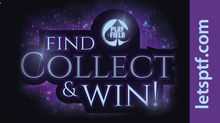The most common reason loyalty programs fail to achieve great results
- Kara Holm
- Jul 6, 2017
- 6 min read
Today’s blog is going to reveal something that’s obvious. I’m almost embarrassed to say it out loud, but I feel compelled to because even though most businesses claim to understand loyalty, research suggests that, in practice, most aren’t communicating loyalty program value to consumers.
A simple idea can make a big difference
Recently, I received a text message from Cineplex Scene program. In case you don’t know, Cineplex has a virtual monopoly on movie theatres in Canada. The text message included the number of points I had available, and a link to a website showing what those points could be redeemed for. It was a simple communication, but it had a big impact on my perception of the Scene program.


For starters, I had no idea how many Scene points I had until I received the text. Scene is not a high-priority loyalty program for me, as I only use it at the cinema and in Sport Chek. The communication helped show me the true value in the Scene program by visually (with pictures) demonstrating what my points could be redeemed for. Knowing how many points you have is meaningless if you don’t know their value. As a result of the informative text message, the point value was no longer abstract or theoretical: it was real. Finally, the communication demonstrated the extent of the program’s partnerships with retail and dining outlets, as well as featuring some of the packaged “experiences” Cineplex offers at its locations.
In practice, I do redeem for a free film whenever I’m advised there’s an opportunity – usually when I’m purchasing tickets online or through the app. While I may have been actively using the program, I did not have any conception of what it takes to earn points or how the rewards are valued. How many films do I have to see to get one free? If I buy something at Sport Chek how many points do I earn for every dollar spent?
Why does it matter if customers understand your loyalty program?
According to a 2016 study, Canadians have around 11.3 loyalty program memberships and are active in 7.3.[1] Americans have more memberships and are active in fewer programs – 13.4 and 6.7.[2] More than 20% of program members had never made a redemption, and as a result, these individuals were more at risk of defection than customers who redeemed their points.[3]
It is estimated that there are $100 Billion USD in loyalty program points that are unredeemed by members in the United States.[4]
That $100 Billion in unspent points is a liability[5] for the program operators and – more importantly in my opinion and experience – a missed opportunity to build relationships with members.
This research, as I read it, points to the reality that that many loyalty program owners have not effectively communicated the benefits or value of their programs to their customers. While some members will be saving points for a special purpose[6], many are just collecting and forgetting. It is the responsibility of the loyalty program owner to communicate value to its members, as Cineplex did for me.
You don’t just want your customers to carry your card in their wallets – real or virtual – your program should be top of mind before customers make a purchase decision. If customers see value in your program, that will influence their spending.
I recently participated in a panel about loyalty programs during the Canadian Gaming Summit. The marketing people from casinos across Canada in attendance clearly understand the objectives of loyalty programs. The reality is that most businesses do not translate that knowledge into action.
The real reason loyalty programs aren't effective
Now, as promised in the title, here is the number one reason loyalty programs fail to improve loyalty, as well as maintain and grow revenues:
Don’t assume that just because you understand your program, that your customers or front line employees do.
Tips for activating your loyalty program
How do you get customers to be active in your program? The answer seems simple, but it must be voiced.
Plan, communicate, activate.
Assess, refresh, communicate, activate. Repeat.
Here are five simple tips to help you plan, communicate and activate your loyalty program to create great results from your launch period and forward into the life of the program.
People are loyal to experiences. Many of the best loyalty programs offer more than transactional benefits like points that can be exchanged for cash, products or services. Consider ways to create privileges and recognition for your best customers – defined by value, frequency, or a combination – to show them you appreciate their loyalty and business.
Communication is key. Help customers understand the value, specifically what benefits and rewards that they are entitled to through clear messages. Regularly tell them what their points balance is and remind them how they can redeem their points. Make communications as personal as possible.
Make it aspirational. Your most loyal program users will have a plan for their points. Help them imagine how the points in your program could create a memorable experience. Show what’s possible with lower point balances, but also demonstrate the benefits and privileges they could achieve with increased engagement.
Don’t forget your employees. Your front-line employees are the most important ambassadors of your program. Do they understand the program? Help them understand the customer value and get them excited so they can share their enthusiasm with your customers. Make sure to continually reinforce the value.
Put the program to work. Service standards are essential. This also helps ensure the program is top-of-mind for employees every day. Make sure you – and your partners – ask for the card at every point of contact. That’s in person, online and through apps. Make it easy for people to collect their points.
"See the big picture"

Cineplex “sees the big picture”, as its slogan asks its customers to do in its advertising. Although Cineplex has a virtual monopoly on movie theatres, it understands that it is competing with lots of other activities for consumer discretionary dollars. From restaurants, to live music, to golf, the competition for wallet share is fierce. Finding ways to integrate into its customers’ lives –not just when they might want to see a film – is a key part of the Cineplex strategy. Cineplex works very hard to demonstrate how the Scene program and Cineplex brand are valuable to the members at all points of contact. The company’s approach includes mini-movies before the films, advertisements with its partners and pre-show gamification. All of these messages plant in the customer’s mind that Cineplex belongs to the whole family experience.
The intention of the Cineplex text message seemed to be to move me along the loyalty continuum from “active” to “engaged” by building my understanding of the program. Scene is a solid program with enough selection to attract individuals in the majority of customer segments that comprise Cineplex’s diverse core audience. Furthermore, Cineplex is being strategic by taking simple actions to stay top of mind, educate its members and communicate its value.
Before the text message I did not fully understand the program or appreciate its value. Now Cineplex Scene is among the programs such as Shoppers Optimum, American Express Travel Rewards, Aeroplan/Altitude, and PC Plus that I understand and feel I have mastered. Well done!
See also:
"The Age of Personalization" - October 2016
"Making your point: Loyalty programs & communication" - August 2016
"The exchange - loyalty, customers & rewards" - November 2015
[1] “Executive Summary: 2016 Bond Loyalty Report”, Canadian Launch Edition, Bond Brand Loyalty, page 6. Bond defines “active” program memberships as those that earned or redeemed points in the last year.
[2] “Executive Summary: 2016 Bond Loyalty Report”, U.S. Launch Edition, Bond Brand Loyalty, page 6.
[3] Ibid, page 10.
[4] “The Battle for Love & Loyalty: Executive Summary: 2017 Bond Loyalty Report”, U.S. Launch Edition, Bond Brand Loyalty, page 5.
[5] Depending on how loyalty program points are accounted for, they can appear as a negative balance for the owner business.
[6] Last year, many Canadians whose Air Miles that were more than five years old were set to expire indicted that they had been saving earning and saving Air Miles as part of their larger retirement plans. See The Toronto Sun, “Air Miles Needs to fix the problem it created”, December 10, 2016, Jim Warren.






Comments